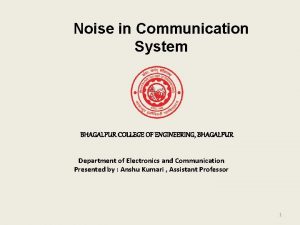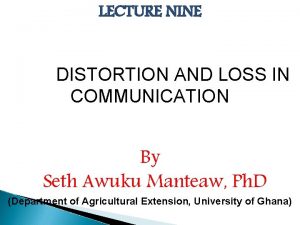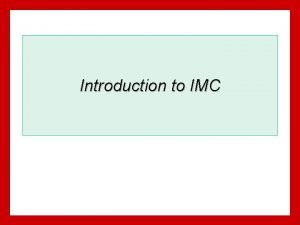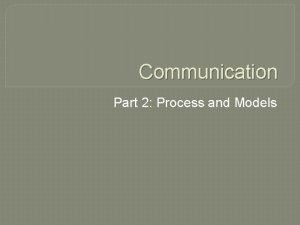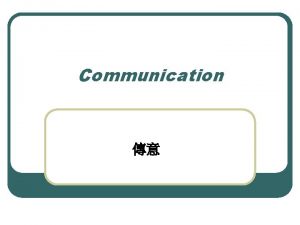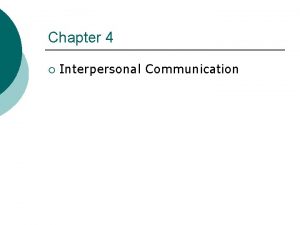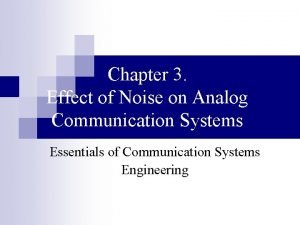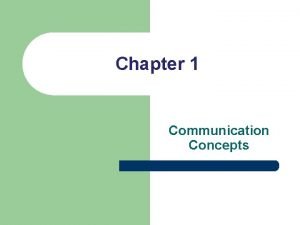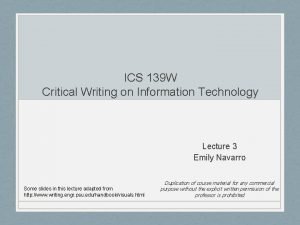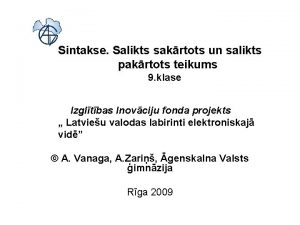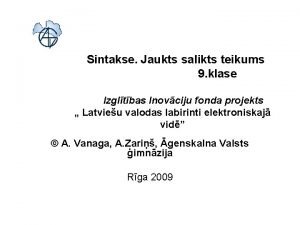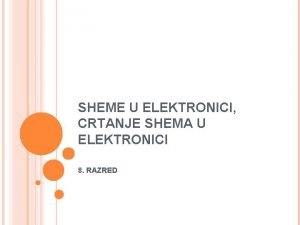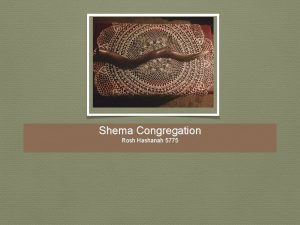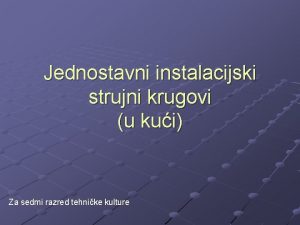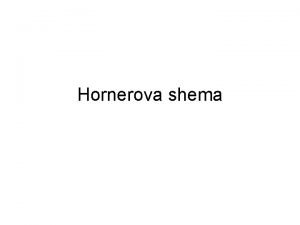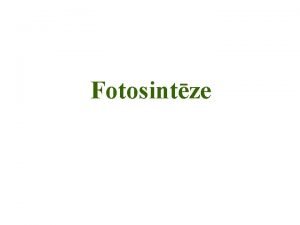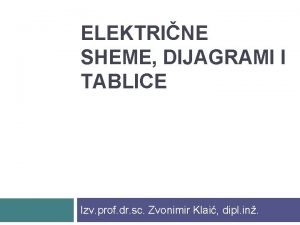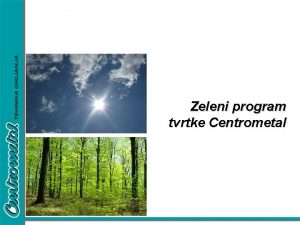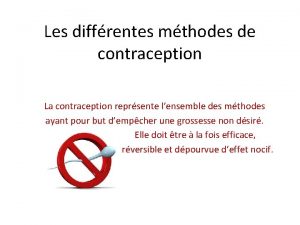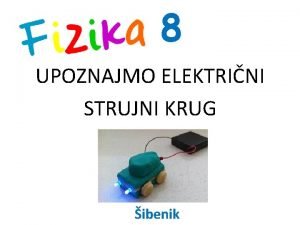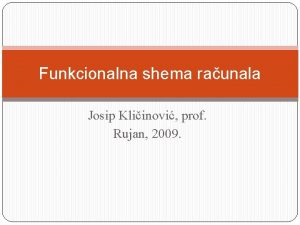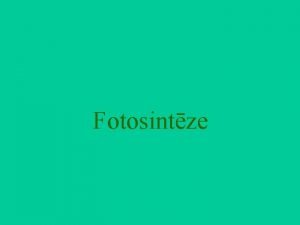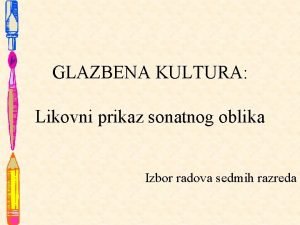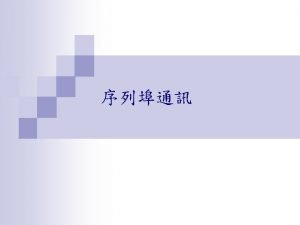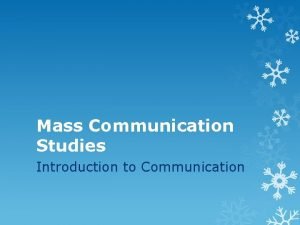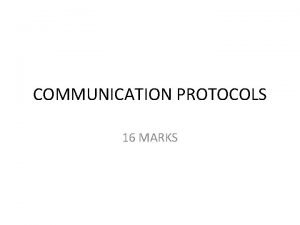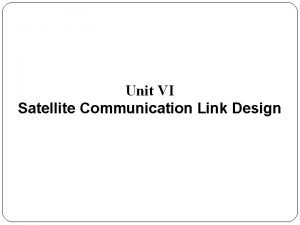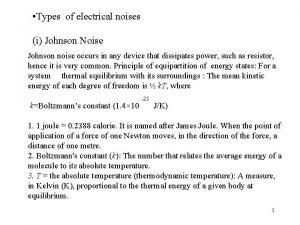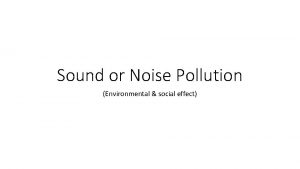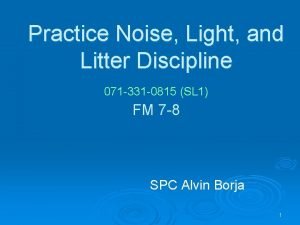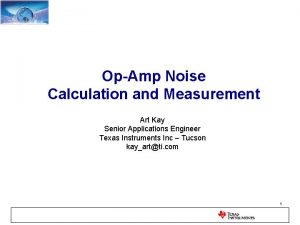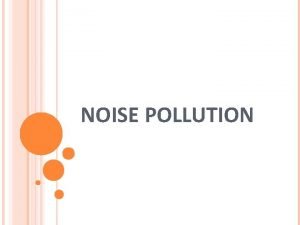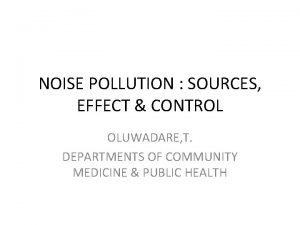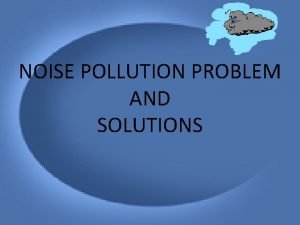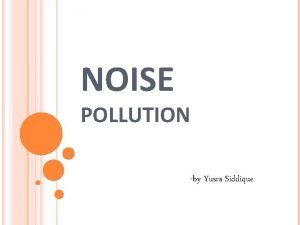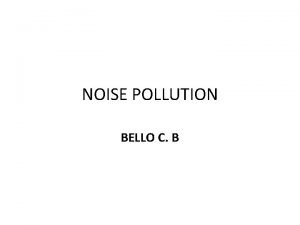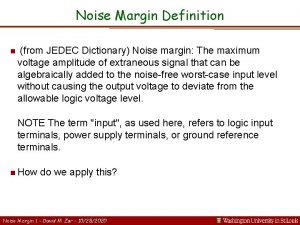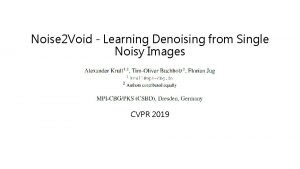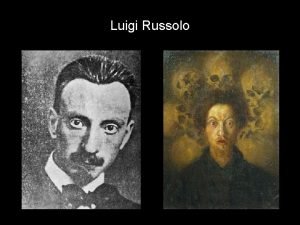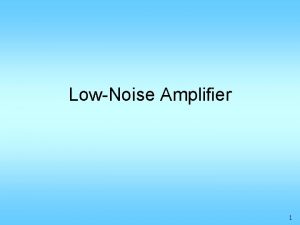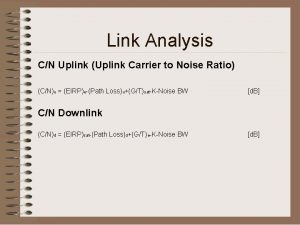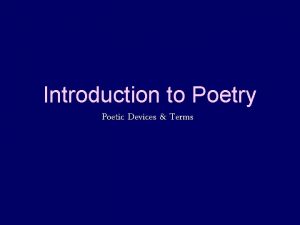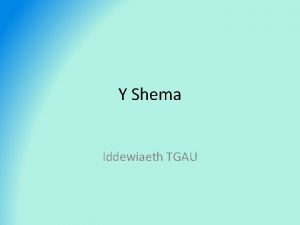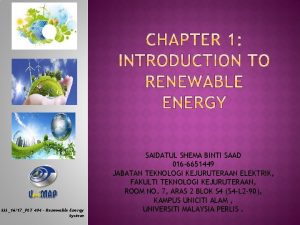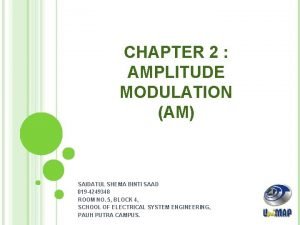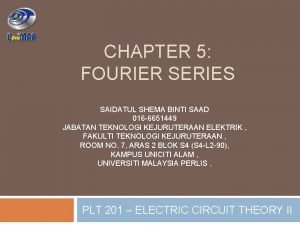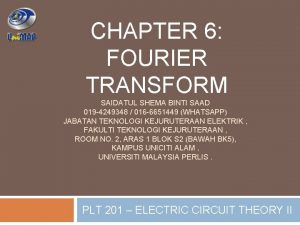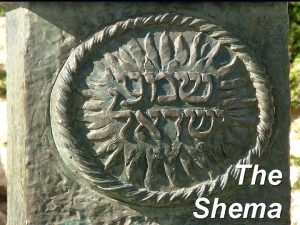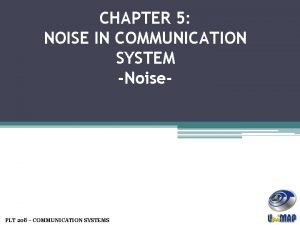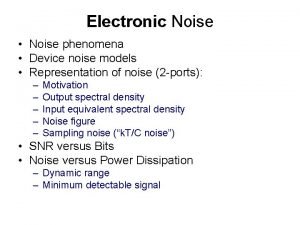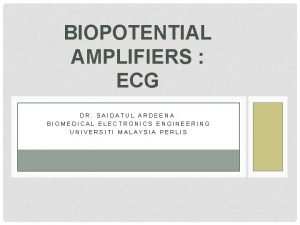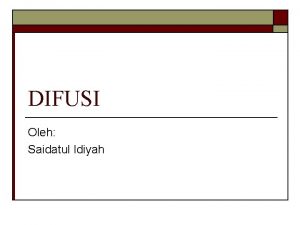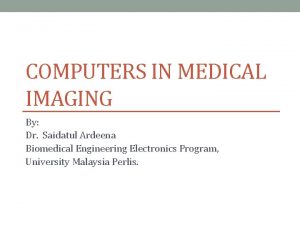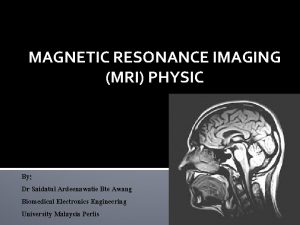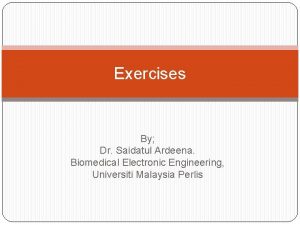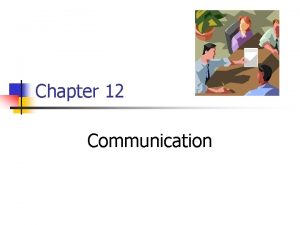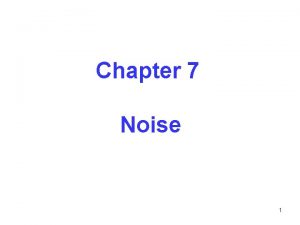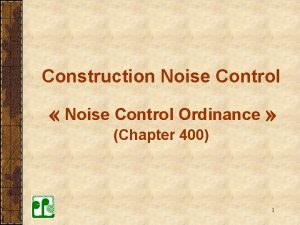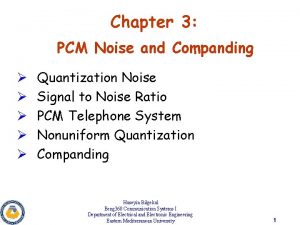CHAPTER 5 NOISE IN COMMUNICATION SYSTEM SAIDATUL SHEMA
































































- Slides: 64

CHAPTER 5: NOISE IN COMMUNICATION SYSTEM SAIDATUL SHEMA BINTI SAAD 016 -6651449 JABATAN TEKNOLOGI KEJURUTERAAN ELEKTRIK, FAKULTI TEKNOLOGI KEJURUTERAAN, ROOM NO. 7, ARAS 2 BLOK S 4 (S 4 -L 2 -90), KAMPUS UNICITI ALAM , UNIVERSITI MALAYSIA PERLIS. SSS_19/20_PLT 208 – Communication System

What to learn in this chapter? • Noise ▫ Definition ▫ Types of noise ▫ Noise calculation: noise factor, noise figure & noise temperature • Transmission Media / Channels ▫ Definition ▫ Types of transmission media / channels SSS_19/20_PLT 208 – Communication System

PART I -Noise- CHAPTER 5: NOISE IN COMMUNICATION SYSTEM SSS_19/20_PLT 208 – Communication System

INTRODUCTION What is noise? • undesired random variations that interface with the desired signal and inhibit communication. • Electrical noise – undesirable electrical energy that falls within the pass-band of the signal Where does noise originate in a communication system? • Channel @ transmission medium • Devices @ Equipment SSS_19/20_PLT 208 – Communication System

INTRODUCTION SSS_19/20_PLT 208 – Communication System

INTRODUCTION Noise Effect • One of the main limiting factor in obtaining high performance of a communication system. • Decrease the quality of the receiving signal. SSS_19/20_PLT 208 – Communication System

Block Diagram of Communication System With the Existence of Noise SSS_19/20_PLT 208 – Communication System

INTRODUCTION • Noise, interference and distortion ▫ Noise �Refers to random and unpredictable electrical signals produced by natural process. �Superimposed on information bearing signal, the message partially corrupted or totally erased. �Can be reduced by filtering but can’t totally eliminated. SSS_19/20_PLT 208 – Communication System

INTRODUCTION ▫ Interference �A contamination by extraneous signals from human sources (e. g. from other Tx, power lines, machineries) �Often occurred in radio system whose Rx antenna intercept several signals at the same time. SSS_19/20_PLT 208 – Communication System

INTRODUCTION ▫ Distortion �The signal perturbation caused by imperfect response of the system to the desired signal. �Disappear when the signal is turned-off. �Can be corrected by the equalizers. SSS_19/20_PLT 208 – Communication System

Noise Remedies? REDUCE BANDWIDTH INCREASE TRANSMITTER’S POWER LOW NOISE AMPLIFIERS SSS_19/20_PLT 208 – Communication System

Noise Categories Correlation implies a relationship between the signal and the noise. CORRELATED NOISE exists only when a signal is present. UNCORRELATED NOISE present all the time whethere is signal or not. SSS_19/20_PLT 208 – Communication System

Correlated Noise • Exists only when a signal is present. • Is a form of internal noise that is correlated to the signal. • Produced by nonlinear amplification and includes harmonic and intermodulation distortion (both of which are forms of nonlinear distortion/amplitude distortion). • Nonlinear distortion creates unwanted frequencies that interfere with the signal and degrade performance. SSS_19/20_PLT 208 – Communication System

Types of Uncorrelated Noise SSS_19/20_PLT 208 – Communication System

External Noise ▫ Noise generated outside the electronic equipment used. ▫ Source can be terrestrial or extraterrestrial (E. g. the earth, the moon, the sun, the galaxies). ▫ Do not effect the entire communication frequency spectrum but affect certain frequencies at certain times and locations. ▫ Types: Man made noise, space noise, atmospheric noise. SSS_19/20_PLT 208 – Communication System

Cont’d. . . a. Man made noise o Produced by mankind o Source : Spark-producing mechanisms o Impulsive in nature & contains a wide range of frequencies propagated through space. o Sometimes called industrial noise (metropolitan & industrial area). SSS_19/20_PLT 208 – Communication System

Cont’d. . . b. Space noise o The sun is a powerful source of radiation. o Stars also radiate noise called cosmic, stellar or sky noise. o Important at higher frequencies (VHF and above) because atmospheric noise dominates at lower frequencies. SSS_19/20_PLT 208 – Communication System

Cont’d. . . c. Atmospheric noise o The principle source is lightning ( a static electricity discharge). o Can propagate for a long distances through space. o The lightning energy relatively low frequency (up to several MHz). SSS_19/20_PLT 208 – Communication System

Internal Noise ▫ Electronic noise generated by the passive and active components incorporated in the designs of communications equipment. ▫ Types : Shot noise, flicker noise, thermal noise. SSS_19/20_PLT 208 – Communication System

Cont’d. . . • Shot Noise o Caused by a random arrival of carriers (holes and electrons) at the output of an electronic devices. o Randomly varying & superimposed onto any signal present. o Sometimes called transistor noise. SSS_19/20_PLT 208 – Communication System

Cont’d. . . • Flicker noise o Excess noise that related to dc current flow through imperfect conductors. o The real nature of flicker noise not yet fully understood. SSS_19/20_PLT 208 – Communication System

Cont’d. . . • Thermal Noise ▫ This type of noise arise due to the random motion of free electrons in the conducting medium such as resistor. ▫ Each free electron inside a resistor is in motion due to its thermal energy. ▫ The path of electron motion is random and zigzag due to collision with the lattice structure. SSS_19/20_PLT 208 – Communication System

Cont’d. . . SSS_19/20_PLT 208 – Communication System ▫ The net effect of the motion of all electrons constitutes an electric current flowing through the resistor. ▫ It causes the rate of arrival of electron at either end of a resistor to vary randomly and thereby varies the resistor’s potential difference. That is the direction of current flow is random and has a zero mean value. ▫ Resistors and the resistance within all electronic devices are constantly producing noise voltage Vn(t). ▫ Since it is dependent on temperature, it is also referred to as thermal noise.

Cont’d. . . SSS_19/20_PLT 208 – Communication System • Thermal noise also known as Johnson noise or white noise. • In 1928, J. B. Johnson founded that Noise Power is direct proportionally with temperature and bandwidth. Np = k T B Where Np = noise power (Watt) k = Boltzman constant (1. 38 x 10 -23 J/K) T = conductor temperature (K) [Add 273 to C] B = Bandwidth of system (Hz) • Noise spectrum density is constant for all value of frequency to 1012 Hz.

Cont’d. . . • From the study of circuit theory, the relationship between source resistor and matched load under maximum power transfer is when Rn = RL. • The total of noise source power is Pn. SSS_19/20_PLT 208 – Communication System

Cont’d. . . • Known as Rn = RL = R, • Therefore voltage at RL is SSS_19/20_PLT 208 – Communication System

Example 1 • A receiver has a BW of 10 k. Hz with the 4. 14 x 10 -17 W noise power. A resistor that matches the receiver input impedance is connected across its antenna terminals. Calculate the resistor’s temperature in Celsius. SSS_19/20_PLT 208 – Communication System

Example 2 • A 1 kΩ resistor is connected across 1 kΩ antenna input of a television receiver. The BW of the receiver is 5 MHz and the resistor at the room temperature 293 K. Calculate the noise power and noise voltage applied to the receiver input. SSS_19/20_PLT 208 – Communication System

How to Quantifying the Noise? • The presence of noise degrades the performance of analog and digital communication. • The extent to which noise affects the performance of communication systems is measured by the output signal to noise power ratio or SNR (for analog communication systems) and probability of error (for digital communication systems). SSS_19/20_PLT 208 – Communication System

Cont’d. . . • The signal quality at the input of the receiver is characterized by the input signal to noise ratio. Because of the noise sources within the receiver, which is introduced during the filtering and amplification processes, the SNR at the output of the receiver will be lower than at the input of the receiver. • This degradation in the signal quality is characterized in terms of noise equivalent bandwidth, N 0, effective noise temperature, Te. and noise figure, NF SSS_19/20_PLT 208 – Communication System

Noise Calculation • SNR is ratio of signal power, S to noise power, N. • Noise Factor, F • Noise Figure, NF SSS_19/20_PLT 208 – Communication System

Noise Calculation In Amplifier • Two types of model - Noise amplifier Model. - Noiseless amplifier model. SSS_19/20_PLT 208 – Communication System

Analysis of Noise Amplifier Model SSS_19/20_PLT 208 – Communication System

Analysis of Noiseless Amplifier Model SSS_19/20_PLT 208 – Communication System

SNR 0 <<< SNRi As known as Noise Factor, Noise Temperature, SSS_19/20_PLT 208 – Communication System

SSS_19/20_PLT 208 – Communication System Analysis of Cascade Stages • Consider three two ports in cascade antenna Si Ni Ti F 3, Te 3 F 1, Te 1 G 1 Nai 1 pre-amplifier Stage 1 Nai 2 F 2, G 2, Te 2 demodulator Stage 2 G 3 Nai 3 amplifier Stage 3 So No

Stage 1 SSS_19/20_PLT 208 – Communication System

Stage 2 SSS_19/20_PLT 208 – Communication System

Stage 3 SSS_19/20_PLT 208 – Communication System

Noise Factor, F SSS_19/20_PLT 208 – Communication System

SSS_19/20_PLT 208 – Communication System Known as the overall noise factor, FTOTAL

And we can calculate noise temperature, Te SSS_19/20_PLT 208 – Communication System

SSS_19/20_PLT 208 – Communication System It can also be shown that the overall noise figure, F and the effective noise temperature, Te of n networks in cascade is given by:

Transmission Loss, Attenuator • Every transmission medium will produce power loss. Pout < Pin. § Power loss or attenuated is given by the following equation: SSS_19/20_PLT 208 – Communication System

Cont’d. . . • We also can calculate by using this following equation; Where ℓ = transmission medium length α = attenuated constant SSS_19/20_PLT 208 – Communication System

Example 3 Determine: a. Noise Figure for an equivalent noise temperature of 75 K (use 290 K for the reference temperature). b. Equivalent noise temperature for a Noise Figure of 6 d. B. SSS_19/20_PLT 208 – Communication System

Example 4 • For three cascaded amplifier stages, each with noise figure of 3 d. B and power gain of 10 d. B, determine the total noise figure. SSS_19/20_PLT 208 – Communication System

Example 5 • An amplifier consists of three identical stages in tandem. Each stage having equal input and output impedances. For each stages, the power gain is 8 d. B when correctly matched and the noise figure is 6 d. B. Calculate the overall power gain and noise figure of the amplifier. SSS_19/20_PLT 208 – Communication System

PART II -Transmission Media / Channels- CHAPTER 5: NOISE IN COMMUNICATION SYSTEM SSS_19/20_PLT 208 – Communication System

Introduction • Provides the connection between the transmitter and receiver. 1. Pair of wires – carry electric signal. 2. Optical fiber – carries the information on a modulated light beam. 3. Free space – information-bearing signal is radiated by antenna SSS_19/20_PLT 208 – Communication System

Cont’d. . . • Signal transmission problem Øadditive noise – generated internally by components used to implement the communication system. ØInterference from other users of the channel. • Minimizing noise effects ▫ Increasing the power of transmitted signal. • Constraint ▫ Limited power level ▫ Channel bandwidth availability SSS_19/20_PLT 208 – Communication System

Cont’d. . . Wire lines Underwater acoustic Channels Wireless electromagnetic Fiber optics SSS_19/20_PLT 208 – Communication System

Cont’d. . . • Wire Lines Channel ▫ Signals transmitted are distorted in both amplitude and phase. – corrupted by noise. ▫ Carry a large percentage of daily communication around the world. SSS_19/20_PLT 208 – Communication System

Cont’d. . . • Fiber Optics Channel ▫ Low signal attenuation ▫ Highly reliable photonic devices ▫ Large bandwidth available ▫ Services : voice, data facsimile and video ▫ Tx – light source (e. g. LED, laser) ▫ Rx – photodiode ▫ Noise source : photodiodes & amplifiers SSS_19/20_PLT 208 – Communication System

Cont’d. . . • Wireless Electromagnetic Channels ▫ Electromagnetic energy is coupled to the propagation medium by antenna (radiator) ▫ Antenna size & configuration – Frequency of operation ▫ Efficient radiation – antenna longer than 1/10 λ • Example A radio station transmitting in AM frequency band, fc = 1 MHz, λ = 300 m, requires antenna at least 30 m. SSS_19/20_PLT 208 – Communication System

Cont’d. . . • Mode of propagation of EM waves i. Ground-wave propagation ii. Sky-wave propagation iii. Line-of-sight (LOS) SSS_19/20_PLT 208 – Communication System

GROUND-WAVE PROPAGATION • • Surface-wave propagation Dominant mode of propagation Frequency band: 0. 3 – 3 MHz Applications: AM broadcasting, maritime radio broadcasting • Disturbances for signal transmission: atmospheric noise, man-made noise, thermal noise. SSS_19/20_PLT 208 – Communication System

Cont’d. . . SSS_19/20_PLT 208 – Communication System

SKY-WAVE PROPAGATION • Transmitted signals being reflected from ionosphere • Frequency : above 30 MHz • Little loss • Problem : Signal Multipath • Application : Satellite communications SSS_19/20_PLT 208 – Communication System

Cont’d. . . > fc Antenna at different angles SSS_19/20_PLT 208 – Communication System

LINE-OF-SIGHT (LOS) PROPAGATION • VHF band higher • Limited by curvature of earth • Problem : Thermal noise (Rx front end) Cosmic noise (pick-up by antenna) • Application: A TV antenna mounted on a tower of 300 m height to provide a broad coverage area (67 km) SSS_19/20_PLT 208 – Communication System

Cont’d. . . SSS_19/20_PLT 208 – Communication System

Cont’d. . . • Underwater acoustic channels ▫ EM waves do not propagate over long distances under water except at extremely low frequencies ▫ Expensive – because of the large and powerful transmitters required ▫ Problem : Attenuation – skin depth SSS_19/20_PLT 208 – Communication System

Cont’d. . . • Multipath channel – signals reflections from the surface and the bottom of the sea. • Noise : ambient ocean acoustic noise, man-made acoustic noise SSS_19/20_PLT 208 – Communication System
 Quantization noise in pcm
Quantization noise in pcm Noise is added to a signal in a communication system *
Noise is added to a signal in a communication system * Interactive communication model
Interactive communication model Psychological noise
Psychological noise Communication process
Communication process Example of psychological noise
Example of psychological noise Why is communication a process
Why is communication a process Psychological noise in communication
Psychological noise in communication Psychological noise in communication
Psychological noise in communication Air message
Air message Chapter 4 interpersonal communication
Chapter 4 interpersonal communication Thermal noise in analog communication
Thermal noise in analog communication Biasnn
Biasnn Semantic noise in communication
Semantic noise in communication Mechanical noise in communication
Mechanical noise in communication External noise in communication
External noise in communication Kas ir salikts pakārtots teikums
Kas ir salikts pakārtots teikums Jaukts salikts teikums shēma
Jaukts salikts teikums shēma Osnovni simboli u elektrotehnici 8 razred
Osnovni simboli u elektrotehnici 8 razred Shema yisrael adonai eloheinu adonai echad
Shema yisrael adonai eloheinu adonai echad Shema yisrael adonai eloheinu adonai echad
Shema yisrael adonai eloheinu adonai echad Relacijska shema
Relacijska shema Shema sic
Shema sic Serijska sklopka shema spajanja
Serijska sklopka shema spajanja Hornerova schema
Hornerova schema Fotosintēze shēma
Fotosintēze shēma Strujna shema
Strujna shema Centrometal shema spajanja
Centrometal shema spajanja Varnostna shema
Varnostna shema Shema yisrael yhwh eloheinu yhwh echad
Shema yisrael yhwh eloheinu yhwh echad Se questo è un uomo poesia
Se questo è un uomo poesia Shéma utérus
Shéma utérus Otvoreni i zatvoreni strujni krug
Otvoreni i zatvoreni strujni krug Izvedbeni projekt električnih instalacija
Izvedbeni projekt električnih instalacija Elektronu atdošana
Elektronu atdošana Funkcionalna shema računala
Funkcionalna shema računala Fotosintēze shēma
Fotosintēze shēma Shema sonatnog oblika
Shema sonatnog oblika Astabilni multivibrator
Astabilni multivibrator Serial vs parallel
Serial vs parallel What is oral communication and written communication
What is oral communication and written communication Serial communication vs parallel communication
Serial communication vs parallel communication Examples of mass communication
Examples of mass communication Meaning of oral communication
Meaning of oral communication Serial communication vs parallel communication
Serial communication vs parallel communication Is earth a closed system or open system
Is earth a closed system or open system Circularory system
Circularory system Carrier power formula
Carrier power formula Types of electrical noise
Types of electrical noise Conclusion noise pollution
Conclusion noise pollution Sono noise cancelling
Sono noise cancelling Discipline of light refraction
Discipline of light refraction Calibrated noise source
Calibrated noise source Op amp noise calculation
Op amp noise calculation Sound pollution solutions
Sound pollution solutions Noise pollution introduction
Noise pollution introduction Problems from noise pollution
Problems from noise pollution Effects of noise pollution on human health pdf
Effects of noise pollution on human health pdf Noise pollution introduction
Noise pollution introduction Noise margin definition
Noise margin definition Noise to void
Noise to void Luigi russolo futurism
Luigi russolo futurism Mosfet noise model
Mosfet noise model Carrier to noise ratio
Carrier to noise ratio Noise day by shel silverstein
Noise day by shel silverstein

